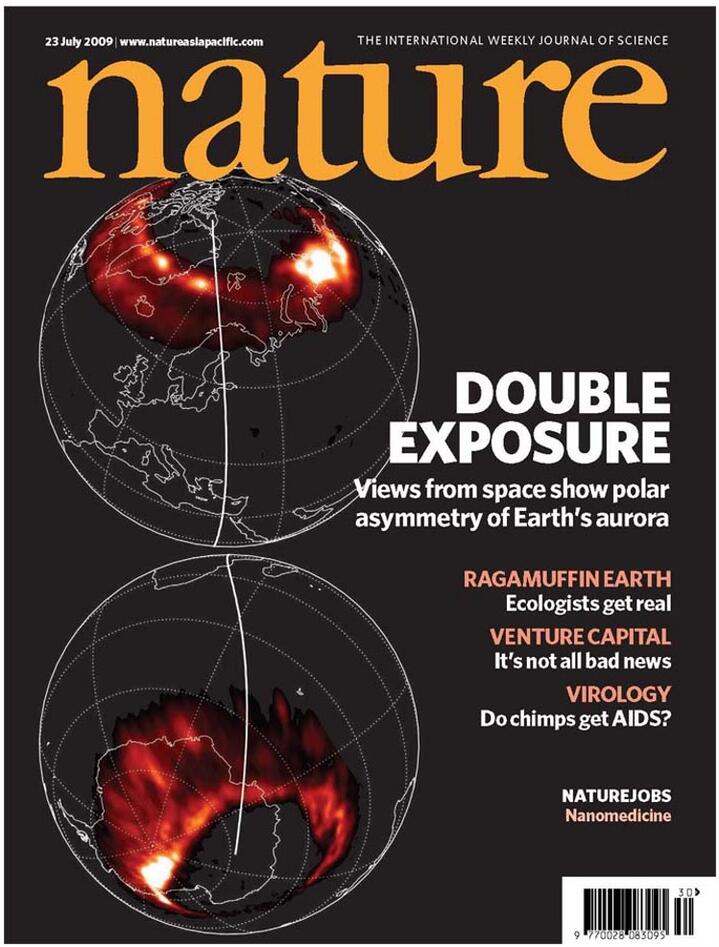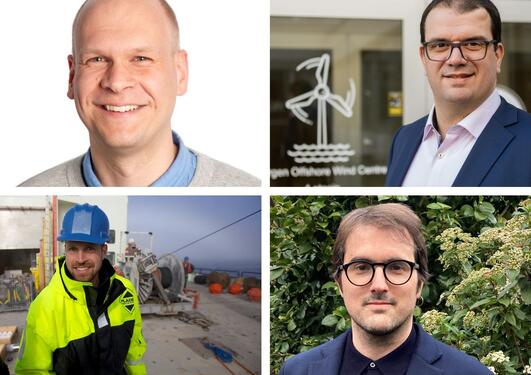Space scientist Karl Magnus Laundal awarded prestigious ERC Grant
Karl Magnus Laundal will use his ERC Consolidator Grant to study the coupling between the Earth’s atmosphere and space.

Main content
«This is really great news»!
Space scientist Karl Magnus Laundal at the Birkeland Centre for Space Science, University of Bergen, is both excited and very happy after today’s announcement from the European Research Council (ERC).
Coupling between the Earth’s atmosphere and space
January 31 it was announced that Laundal will be among the researchers awarded this year’s «ERC Consolidator Grants». The grant has a considerable economical framework in the order of 2 million Euros. According to Laundal, the money will be spent on a project to unveil the coupling between the Earth’s atmosphere and space.
«When colorful aurora lights up a dark sky, this phenomenon is in fact a visual manifestation of the interaction between plasma from space and the Earth’s atmosphere. However, even though this interplay has been known for decades, there are still many unresolved mysteries» Laundal explains, and refers to a remarkable discovery from his own doctoral thesis more than 10 years ago:
«Thanks to satellite measurements recorded simultanously above the Earth’s northern and southern hemispheres, we were able to show that the northern and southern lights can be completely different. Though still today, we are not able to explain why this asymmetry occurs» says Laundal.
Develop a 3D Model
In the new project, Karl Magnus Laundal will replace the two-dimensional space-atmosphere coupling models currently used with a three-dimensional numerical model yet to be developed. Such an «upgrade» will make for a much more realistic representation of the laws of Physics.
Another main limitation today is that most measurements suffer from poor spatial and/or temporal resolution. However, this may soon be about to change:
«In a short time we should expect high-resolution measurements of plasma and magnetic fields from NASA’s EZIE satellites and from the new EISCAT3D radar system, which means that this will be a perfect time to start developing our model», an excited Laundal explains.
Important to monitor Space Weather
Even though it is the curiosity to understand the world that drives Karl Magnus Laundal, he acknowledges that his research will provide much needed information to understand space weather.
«Our satellites and airplanes are vulnerable during periods with increased interplanetary and geomagnetic activity. Also, another problem may arise from the fact that space weather may cause perturbations on the ground, causing blackouts in the electric power grid», Laundal says.
Third major project
«This is the third major project Laundal has been awarded funding of. He already has a Trond Mohn stiftelse (TMS) Starting Grant, and a large Fripro project from the Norwegian Research Council. Congratulations!», says the head of Department of Physics and Technology at The University of Bergen, Kjetil Ullaland.
«The department will now have two researchers who have a TMS Starting Grant and an ERC project at the same time, the other being Justas Zalieckas, who was awarded both an ERC Starting Grant and a TMS Starting Grant in late 2022. This shows that our young researchers are successful and reach out both nationally and internationally».
Ullaland is happy for the recognition this brings to the space science environment in Bergen and Norway.
«The Birkeland Center for Space Science is now in its last phase as Centre of Excellence (SFF), and it is of course very good news that the strong professional environment maintains its activity with outstanding and exciting projects going forward. The same professional environment has also had an ERC Advanced grant in the past, led by Professor Nikolai Østgaard. It means a lot to the space research environment and the institute that we can maintain good continuity and build on the expertise that has been built up over many years», he says.


